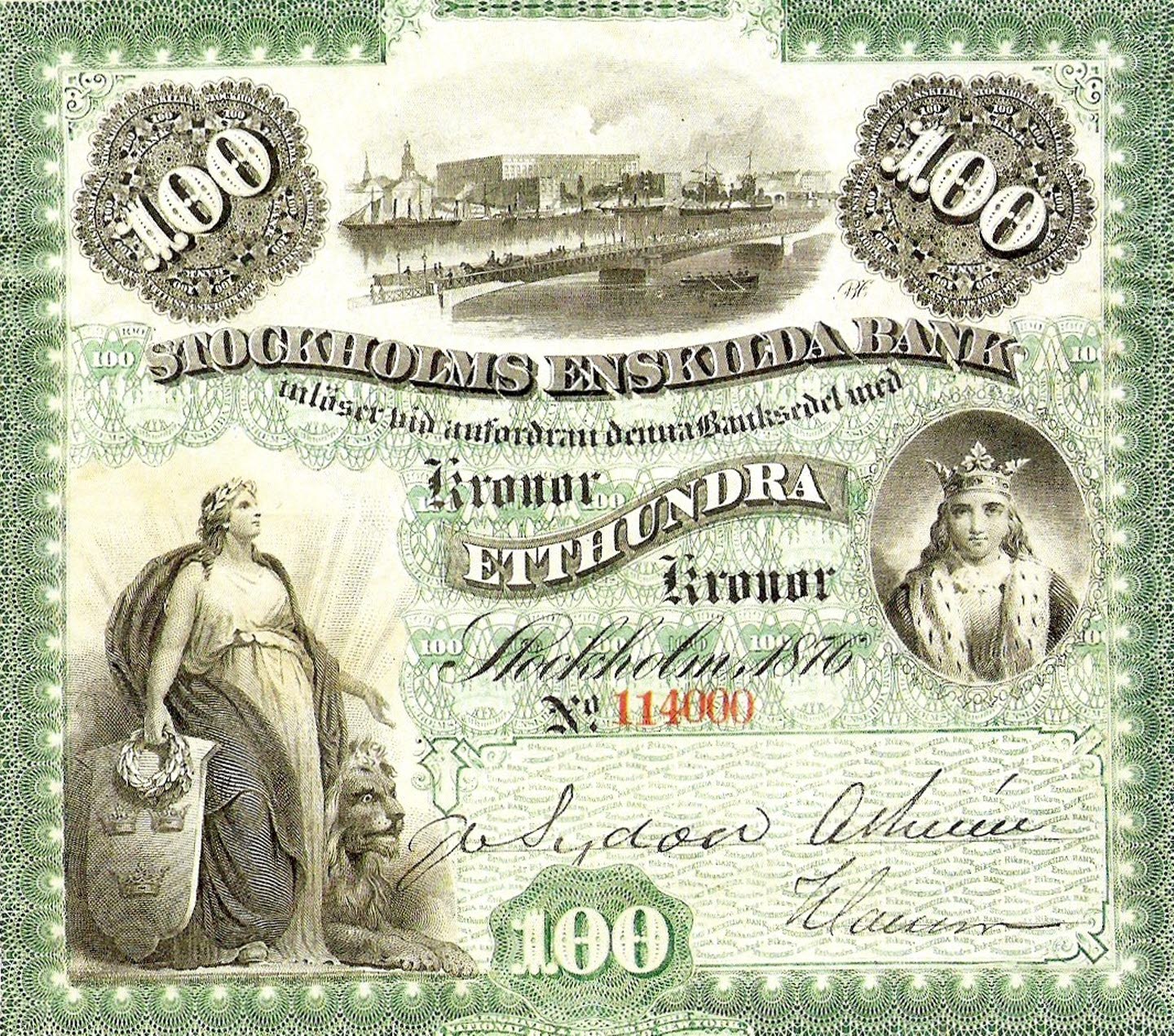1831 - Private banks issue their own banknotes

Swedish commercial banks started to emerge again, with the first being Skånska Privatbanken in Ystad. The bank had the right to issue banknotes, subject to certain terms. Thirty other banks followed due.
In the 1800s, in conjunction with the stabilisation of the value of money, savings banks and commercial banks started to emerge. Skånska Privatbanken in Ystad was soon followed by others.The banks had the right to print their own banknotes to fund their lending. Over a period, therefore, the Riksbank’s banknotes existed alongside banknotes from ten to fifteen commercial banks.
This led to a power struggle in the Riksdag of the Estates. The peasants and clergy wished to support the Riksbank’s banknotes, while the burghers and, to a certain extent, the nobility supported the commercial banks. This led to problems when industrialisation got under way and crises occasionally arose. When the commercial banks were shaken, the Riksbank was unable to step in and provide support. This created uncertainty, which was dangerous for the economy and which Sweden did not remedy until the modern Sveriges Riksbank Act came into force in 1897. This stipulated that the Riksbank would abandon most deposit and lending activities and, in return, gain a monopoly on issuing banknotes. This Act formally entered into force at turn of 1903–04.
